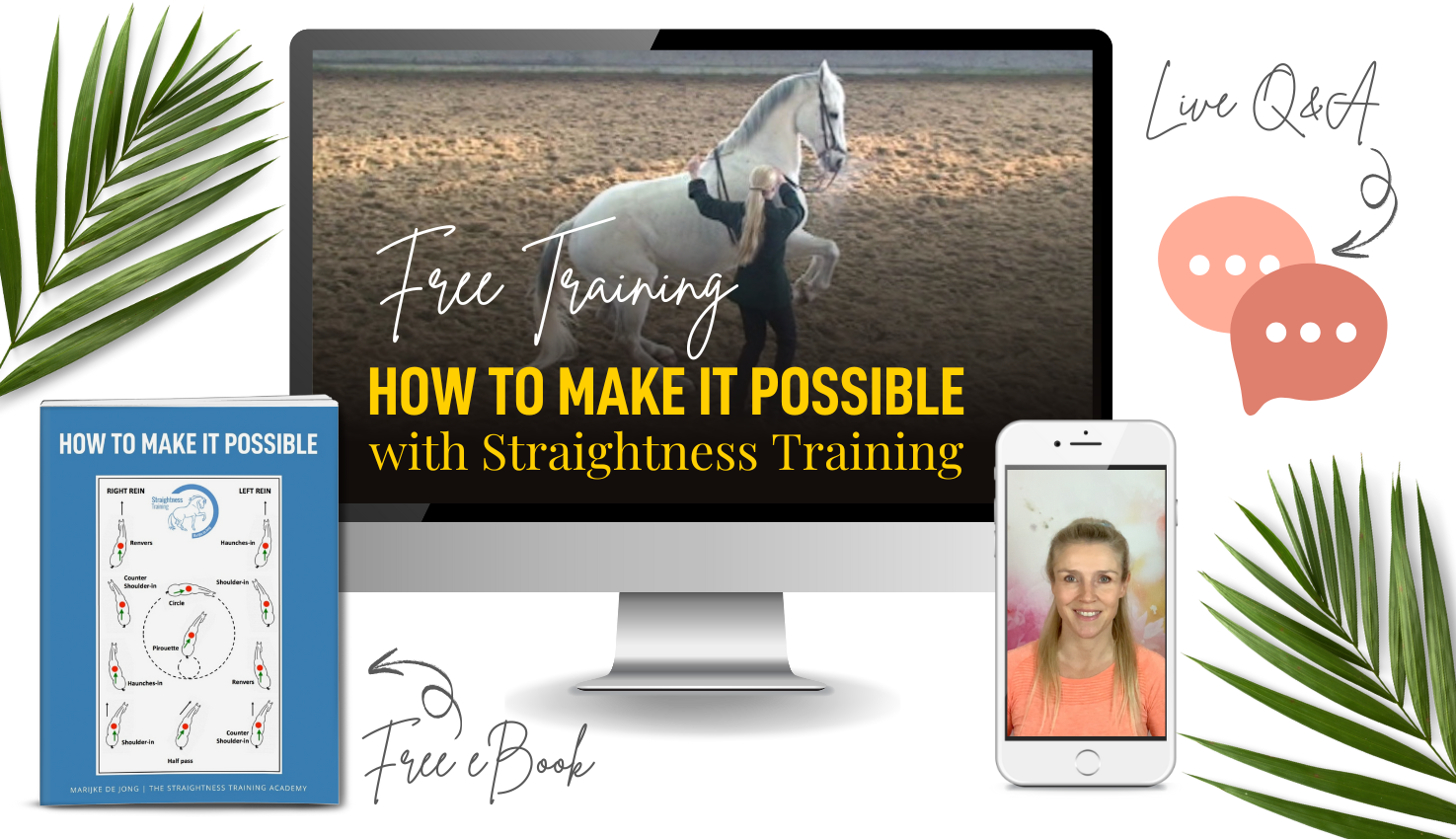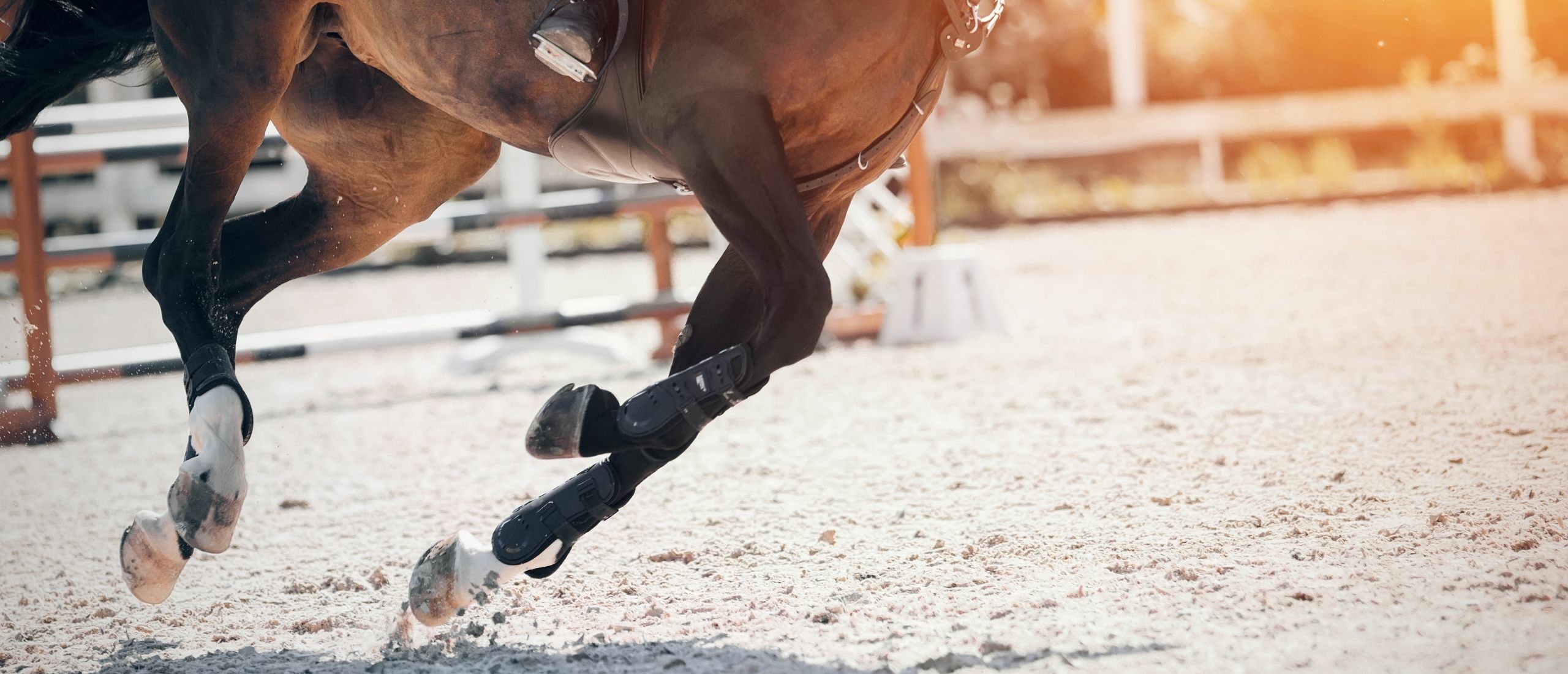
Diagonal Imbalance
In previous articles, we already discussed five different dimensions of natural asymmetry:
- A horse is left-bent or right-bent,
- carries his weight mostly on the front legs,
- is left- or right-handed,
- has a pushing and a carrying hind leg
- and its shoulders are narrower than its hips.
But that’s not all.
Because as soon as the horse starts to move, all these five dimensions cause this to happen:
A diagonal shift of the center of mass

What do we mean by that?
- A symmetrical horse carries equal weight on all four legs. The point of weight is then in the center of the horse.
- A left bent horse – as on the drawing above – will carry most weight on its right front leg. This is caused by the combination of lateral bend, the natural tendency to carry most of its weight with the front legs, the right-handedness, and the pushing and carrying hind legs.
- So the center of mass moves diagonally towards the preferred front leg.
This phenomenon is another dimension of the natural asymmetry: the diagonal imbalance.
Now, the diagonal shift of the center of mass is most clearly visible on circles.
Leaning in or out on circles
You see, when the center of mass is not corrected and remains more towards one front leg, the horse will try to follow its center of mass.
The consequence is a horse that leans in on the inside shoulder or out over the outside shoulder.
For example, let’s have a look at the right-bent horse Maestro.
As you can see in the pictures below, he falls in on the inside shoulder to the left and he falls over the outside shoulder to the right.
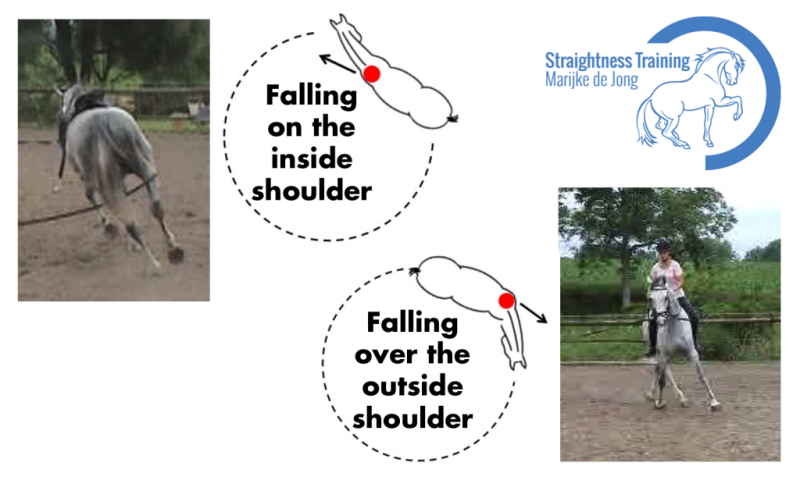
Now, what exactly happens?
Let’s dive into this a bit more and zoom in on:
A right bent horse on a circle to the left
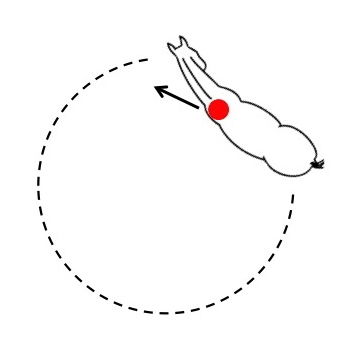
Because of the diagonal shift to the left front leg, the horse will lean in on the circle. Therefore the horse tends to make the circle smaller.
Because so much weight is put on the inside shoulder, it has a braking effect as the horse puts the right front leg down. But the hindquarter keeps moving, thus resulting in a hindquarter that falls out.
A right bent horse on a circle to the right
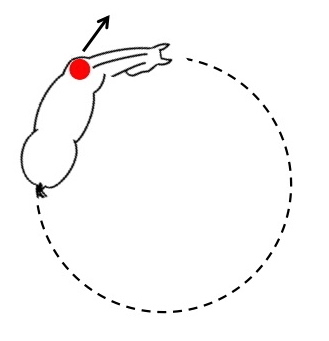
Because of the diagonal shift to the left front leg, a centrifugal force arises. Therefore the horse tends to make the circle larger and larger.
This is why longeing to the right can be impossible in canter, because the horse pulls loose as a result of the enormous centrifugal force.
But the thing is, that this diagonal imbalance not only ruins the roundness of our circles.
There are more serious consequences.
Consequences
First of all, a horse that leans in or out on the circle will tense its back, lift its head and sometimes flex its head to the outside or overbend to the inside to keep balance.
The pressure on the inside front leg and the sacroiliac joint can be very high and can cause premature damage to the leg and joints.
Furthermore, a horse with most weight on a particular front leg might have the tendency to step shorter with that front leg, and also the hind leg that’s on the same side might swing less forward than the other hind leg.

When the rider’s weight is added during riding, this extra weight is also pushed towards this front leg when it’s not straightened during riding.
So for example, if you ride a left bent horse without rebalancing the horse, this leads to overloading of this right front leg. And over a period of time, when you ride a horse every day out of balance, that might lead to navicular disease.
Now when a horse is diagnosed navicular disease on the right front leg it’s oftentimes a left bent horse. And when it’s diagnosed on the left front leg, the horse is oftentimes a right bent horse.
You see, it’s so important that we recognize the symptoms on the circle.
And that we acknowledge that the horse is not equal to both sides.
So, we can make a change by teaching the horse to turn on a circle in a balanced and healthy way.
This is what we do with Straightness Training.
As a bonus, it makes riding much more fun!
What about your horse?
- Does he make the circle bigger on one rein?
- And smaller on the other?
- Or does he lean inwards both to the left and to the right?
- Or outwards?
- Is he overbending the neck on the circles?
- Or is he looking to the outside?
- Or is he already diagnosed “navicular disease”?
Either way, let’s help your horse to find a better balance—with Straightness Training!

